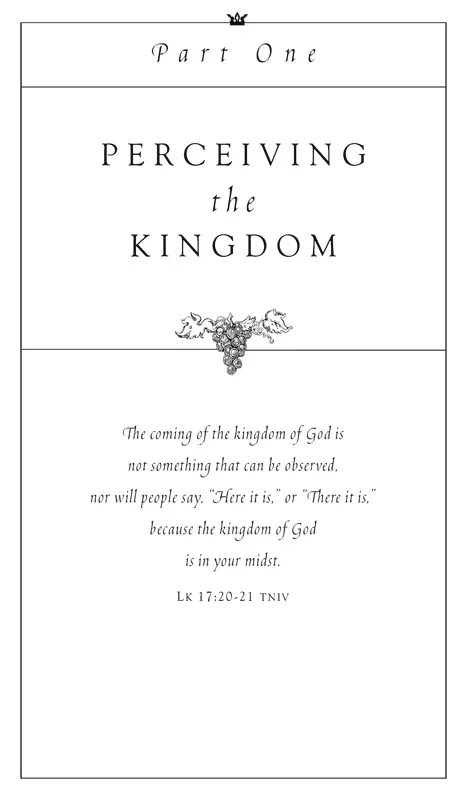Despite denominational and other differences, Christian churches within a given society often reveal a strikingly similar theological perspective. Such a common perspective has characterized conservative North American Protestantism and many of the churches worldwide that have been established through North American and European missionary outreach. Although global evangelicalism includes a broad variety of specific denominations and traditions, it clearly exhibits a particular theological point of view. Evangelicalism has been shaped not just by the Protestant Reformation but also by North American cultural values and by evangelicalism’s common heritage in nineteenth-century revivalism and in the modernist-fundamentalist controversy of the early 1900s.1
Many evangelicals viewed this development positively. If there was indeed an “Evangelical Renaissance” (as theologian Donald Bloesch termed it), this meant at least a partial recovery of the gospel’s social dimension and the end of the modernist-fundamentalist controversy that raged from (roughly) 1900 to 1950.
In the 1970s and 1980s, a number of observers raised probing questions about where evangelicalism was headed. Some asked: Is it enough merely to reaffirm in word and act an evangelical social conscience? Does evangelical theology rest on a sufficiently secure biblical basis to thrust creatively and faithfully into the future? In 1976 veteran theologian Carl F. H. Henry perceived that evangelicalism was “slowly succumbing to an identity-crisis,” even though growth continued.2
The evangelical movement grew significantly in the half century or so between the end of World War II and the year 2000. Evangelicalism posted gains theologically, institutionally and numerically. In Latin America and other places the most dramatic numerical growth came through Pentecostalism in its various branches.
We celebrate the growth of the church wherever it occurs—wherever people come to know Jesus Christ as Savior and Lord and are gathered into communities of worship, discipleship and witness. But we need to ask about the theological base of evangelical and Pentecostal witness. Is this witness grounded in a biblical theology of church and kingdom? Evangel-ism coupled with social conscience is good. A fully biblical theology, however, moves beyond social conscience to kingdom consciousness.
FROM FUNDAMENTALISM TO EVANGELICALISM
A quick historical review will clarify the issue. This requires understanding the history of North American Protestantism in the twentieth century, since evangelical Protestantism has had such a large impact globally.
We can trace three stages in evangelicalism’s wrestling with the question of faithful witness to, and engagement with, society:
1. Uneasy conscience. For convenience, this stage can be linked with the publication of Carl F. H. Henry’s book The Uneasy Conscience of Modern Fundamentalism in 1947. In that book Henry wrote:
The “uneasy conscience” . . . is not one troubled about the great Biblical verities, . . . but rather one distressed by the frequent failure to apply them effectively to crucial problems confronting the modern mind. It is an application of, not a revolt against, fundamentals of the faith, for which I plead.3
This stage began as the battlefield dusts were settling—both literally (World War II) and figuratively (the modernist-fundamentalist controversy)—and theological conservatives had time for second thoughts. The possibility of self-criticism arose in at least some North American fundamentalist circles. Leaders such as Henry and Harold Ockenga were in the forefront of the conscience probers.
The uneasy conscience stage ran from about 1947 until the early 1960s. The pricks of conscience over fundamentalism’s one-sidedness provoked, or at least accompanied, several significant developments in the forties and fifties. Some key signposts were the founding of Fuller Theological Seminary (1947), World Vision (1947) and the Evangelical Theological Society (1949), and the birth of the magazine Christianity Today (1956). The appearance of the National Association of Evangelicals (NAE) somewhat earlier (1942) was also part of the picture. Of parallel significance was the unmistakable impact of Billy Graham’s mass evangelism from 1949 on. In the sixties and seventies these developments were chronicled in such books as Ronald Nash’s The New Evangelicalism, Millard Erickson’s The New Evangelical Theology, David O. Moberg’s The Great Reversal and The Evangelicals by David F. Wells and John D. Woodbridge.4
The result of fundamentalism’s uneasy conscience was the birth of North American evangelicalism.5 This transition resulted in a new concern with social ethics and cultural involvement, a renewed emphasis on scholarship, and the emergence of broader-based and more cordial apologetics. It led directly to the next step away from fundamentalism.
2. Social conscience. No phrase was used more widely in the late 1960s and early 1970s to emphasize evangelicalism’s broadened emphasis than “social conscience.” Typical was Sherwood Wirt’s The Social Conscience of the Evangelical, published in 1968. Though this phase began in the midsixties, in some ways it has continued right up to the present.
Signs of growing evangelical social conscience included an increased emphasis on social issues in the NAE and similar organizations, the blending of social ministries into Billy Graham and Leighton Ford campaigns, and greater evangelical sensitivity to the racial issue and the urban crisis. There were also related changes in evangelical college and seminary curricula and programs. The Chicago Declaration of Social Concern was issued in 1973, and Evangelicals for Social Action was founded.
The social conscience phase was most evident in evangelical publishing. Books appeared that dealt in one way or another with social questions. Evangelical publications focused more on social issues, and new “young evangelical” magazines, such as The Other Side and Sojourners, highlighted social questions.6 David Moberg chronicled a growing list of examples of “evangelism plus social action” in his book The Great Reversal. He concluded, “Evangelicals are awakening to their inconsistencies and returning to the totality of the Christian Gospel.”7
The 1970s and 1980s were perhaps the peak of North American evangelicalism’s social conscience phase. Calls for social concern were buttressed by significant demonstrations of such concern. Underlying this was a broad-based theological consensus.
In a word, this evangelical consensus affirmed that evangelism and social concern go together; both are essential to the one gospel. Sherwood Wirt wrote, “To pit social action against evangelism is to raise a phony issue, one that Jesus would have spiked in a sentence. He commanded his disciples to spread the Good News, and to let their social concern be made manifest through the changed lives of persons of ultimate worth.”8 Carl Henry said, “The Biblical view declares both individual conversion and social justice to be alike indispensable. The Bible calls for personal holiness and for sweeping societal changes; it refuses to substitute private religion for social responsibility or social engagement for personal commitment to God.”9 Similarly, Leighton Ford commented, “It is a scandal when we as Christ’s disciples compartmentalize our lives, putting our personal piety in one segment and our social responsibility in another”; the two go together.10 Similar statements came from Billy Graham, Elton Trueblood, John Warwick Montgomery and many others.
This affirmation of an evangelical social conscience was, to many, a positive and welcome development. Perhaps it marked the end of the modernist-fundamentalist detour. If twentieth-century evangelicals failed to have the social impact they should have had, many felt, at least the failure has been diagnosed and a more biblical course charted.
But was this social conscience consensus fully adequate? Though many evangelicals affirmed the consensus, it still bore marks of the dichotomous, either-or thinking of the past. A number of evangelical leaders, particularly from outside the United States, called for evangelicals to move beyond this dichotomy to a more comprehensive vision.
If the social conscience consensus were boiled down to a formula, it might be this: God saves people who in turn have responsibility for evangelism and social action. The perspective is that of the individual Christian looking out upon the world. But there is another possible view, the perspective of one who steps back behind the evangelism-social action debate and attempts to view God’s total plan for his creation. This is what Paul does in the first three chapters of Ephesians, when he speaks of God’s plan to unite all things in Jesus Christ through the church (Eph 1:10, 22-23; 3:10). Here one sees not two poles—evangelism and social action—but one cosmic purpose. At the center of this design, or “economy” (oikonomia, Eph 1:10), is personal reconciliation to God through Christ. But within the circle one perceives a cosmic plan for the reconciliation of all things. If there were a formula, perhaps it would be this: God in Christ is reconciling the whole creation to himself, and his action through the church is central to his plan.11
3. Kingdom consciousness. By 1980 there were increasing signs that evangelicalism was moving toward such a comprehensive vision.12 A real consensus has not yet emerged, however, and in some respects North American evangelicalism has been fragmenting. Still, internationally, one can discern a broad coming-together around the themes of the kingdom of God and the church’s mission as transformation. Perhaps the most comprehensive articulation of this vision so far is the book Mission as Transformation: A Theology of the Whole Gospel, edited by Vinay Samuel and Chris Sugden with contributions by a globally diverse array of evangelical (including Pentecostal) leaders such as Peter Kuzmic\, Douglas Peterson, Graham Cray and René Padilla.13 Similar evangelical calls to see the church’s mission broadly in terms of the kingdom of God have appeared in other languages.14 This stage, which continues, may be called kingdom consciousness.15 It is the principal perspective from which this book is written.
All salvation comes from God. All genuine renewal and reconciliation—whether personal, communal or cultural—trace back to God’s action and, therefore, to his purpose and plan. Beginning with this awareness, one can find the proper biblical place for every legitimate Christian emphasis, whether evangelism, social action, environmental stewardship, church renewal or discipleship.
The Scriptures emphasize the eternal purpose or plan or will of God— that which he is doing in history to bring about the reconciliation of all things. This divine purpose is identified with the kingdom or reig...


